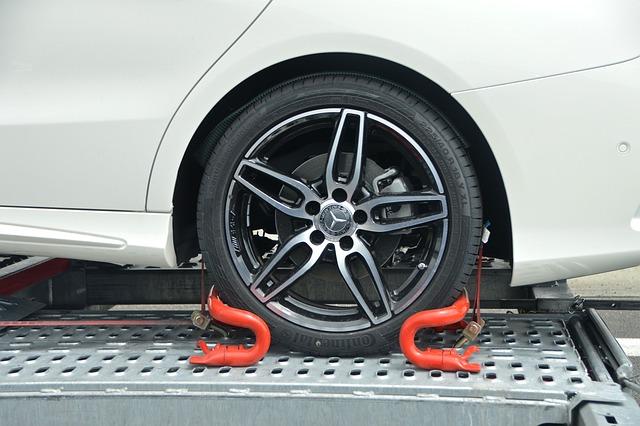Why Proper Weight Distribution is Crucial When Towing Heavy Loads
When it comes to towing heavy loads, understanding the importance of proper weight distribution is essential for ensuring safety and maintaining control. Improper weight distribution can lead to a variety of issues, such as swaying, instability, and even accidents on the road.
Additionally, good weight management not only protects the drivers and passengers but also prolongs the life of the vehicle and trailer. This introduction aims to shed light on the principles of weight distribution, the potential hazards of neglecting this vital aspect of towing, and the best practices to achieve a balanced and safe towing experience.
Understanding Weight Distribution
Weight distribution refers to the manner in which weight is distributed across the vehicle and trailer when towing a heavy load. Proper load distribution ensures that the weight is balanced, which is crucial for maintaining stability while driving. Ideally, approximately 60% of the trailer's weight should be in the front half, while the remaining 40% should be towards the back.
This balance minimizes the risk of swaying and allows for better control during turns and stops. If a truck towing capacity is exceeded, it can cause stress on the vehicle and result in a loss of control. Also, uneven weight distribution can cause the trailer to fishtail, which can lead to potential accidents.
The Dangers of Improper Weight Distribution
Improper weight distribution poses several dangers, foremost among them being the risk of accidents. An unbalanced load can lead to trailer sway, making it difficult for the driver to maintain control. This swaying can escalate quickly, potentially resulting in an uncontrollable situation that may put both the driver and other road users at risk. Additionally, a swaying trailer can lead to jackknifing, which is especially dangerous on highways where vehicles travel at higher speeds.
Another significant danger is the strain improper load distribution places on the towing vehicle. Beyond swaying issues, excessive weight on one axle can lead to uneven tire wear and overheating brakes. As a result, the vehicle may require more frequent maintenance, which can add to the overall costs of towing. Recognizing these dangers is crucial for any driver who routinely tows heavy loads, highlighting the importance of proper weight management to ensure a safe driving experience.
Best Practices for Achieving Proper Weight Distribution
To achieve proper weight distribution, it is essential to start with careful planning before loading any cargo onto the trailer. Ensuring that heavy items are placed in the front of the trailer aids in achieving that ideal balance of weight. Furthermore, securing the load properly will prevent any shifting during transport, which could otherwise disrupt the careful load management that has been executed. Always remember that lighter items should be placed towards the back.
Additionally, utilizing a weight distribution hitch can significantly improve towing safety and stability. These specialized hitches help to redistribute the weight of the trailer and its load evenly over the axles of both the trailer and towing vehicle. Moreover, regularly checking the trailer's setup and conducting routine inspections can help identify any potential issues associated with weight distribution before heading out on the road. Implementing these best practices can lead to a more balanced and secure towing experience.
Using Scale Weighing Techniques
When towing heavy loads, employing scale weighing techniques is an effective method for ensuring proper weight distribution. By weighing the trailer before departure using platform scales, drivers can determine the weight applied to each axle. This data allows drivers to identify whether the load is balanced adequately or requires adjustment.
Many highway rest areas and truck stops offer weigh stations that can be utilized for this purpose. Knowing the exact weight can help drivers make informed decisions about loading arrangements and even influence the choice of towing vehicles for specific loads. By understanding how to use scale weighing techniques, drivers can enhance their towing safety and efficiency.
The Importance of Regular Maintenance
Regular maintenance of both the towing vehicle and trailer is vital for ensuring that the weight distribution remains effective throughout the life of the towing setup. With the wear of components over time, factors such as suspension systems can change, resulting in altered handling characteristics. Regular check-ups allow drivers to adjust for any changes in load distribution that may occur due to wear and tear.
Maintaining tires is critical for managing proper weight distribution. Insufficiently inflated or worn-out tires can adversely affect how weight is distributed, thereby increasing the risks associated with towing. Comprehensive inspections should include checking tire pressure, suspension components, and weight distribution systems. By prioritizing regular maintenance, drivers can help ensure a safer towing experience, prolonging the life of their equipment.
Mastering proper weight distribution is fundamental for anyone involved in towing heavy loads. By understanding the critical aspects of weight management, the dangers of improper distribution, and implementing best practices such as utilizing scale weighing techniques and maintaining regular vehicle inspections, drivers can significantly enhance their safety on the road.
A well-balanced towing setup not only minimizes the risk of accidents and vehicle damage but also provides peace of mind while transporting valuable cargo. Prioritizing these principles ensures that both operators and other road users can enjoy a safer and more efficient driving experience.

